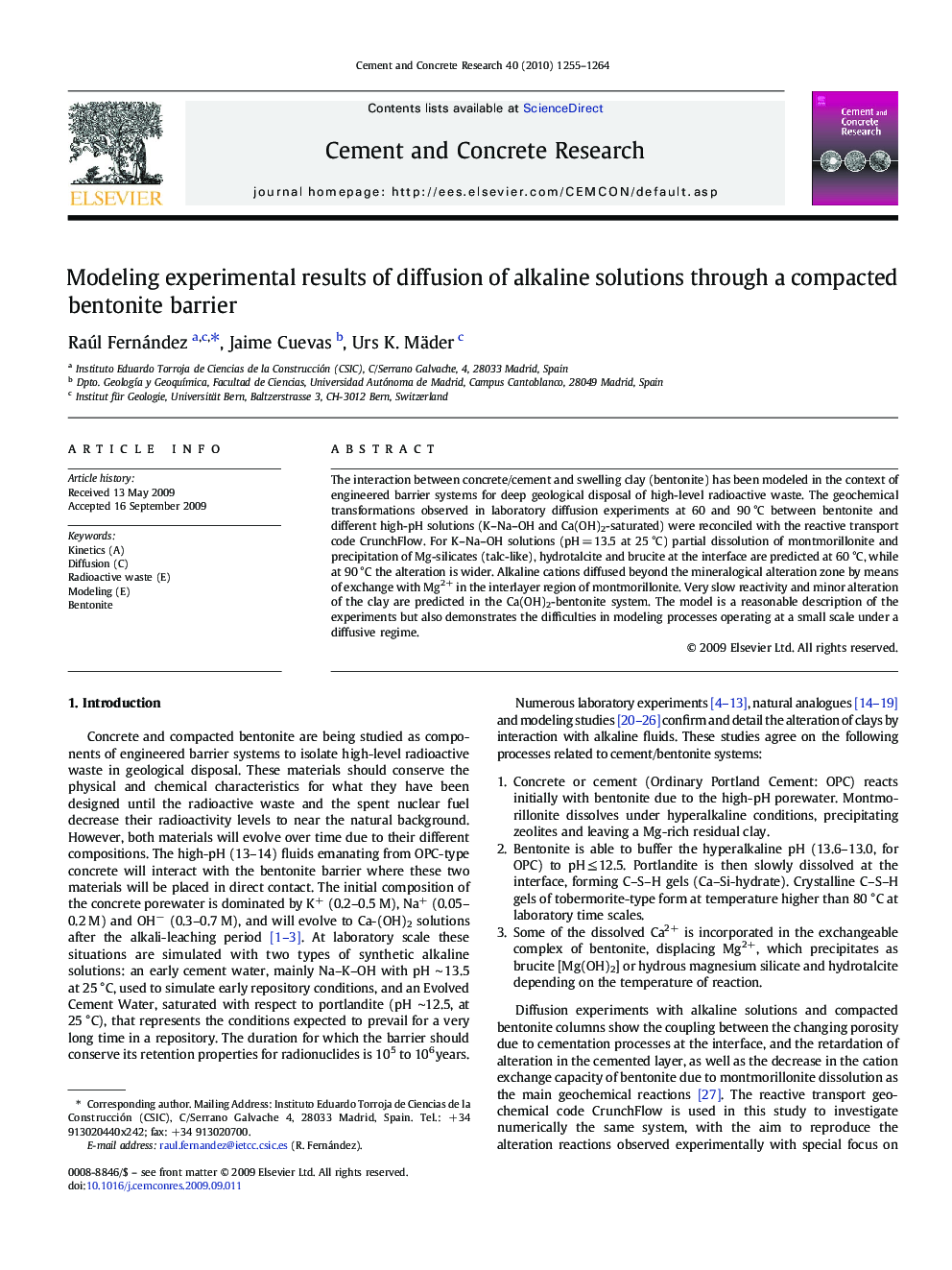| Article ID | Journal | Published Year | Pages | File Type |
|---|---|---|---|---|
| 1457390 | Cement and Concrete Research | 2010 | 10 Pages |
The interaction between concrete/cement and swelling clay (bentonite) has been modeled in the context of engineered barrier systems for deep geological disposal of high-level radioactive waste. The geochemical transformations observed in laboratory diffusion experiments at 60 and 90 °C between bentonite and different high-pH solutions (K–Na–OH and Ca(OH)2-saturated) were reconciled with the reactive transport code CrunchFlow. For K–Na–OH solutions (pH = 13.5 at 25 °C) partial dissolution of montmorillonite and precipitation of Mg-silicates (talc-like), hydrotalcite and brucite at the interface are predicted at 60 °C, while at 90 °C the alteration is wider. Alkaline cations diffused beyond the mineralogical alteration zone by means of exchange with Mg2+ in the interlayer region of montmorillonite. Very slow reactivity and minor alteration of the clay are predicted in the Ca(OH)2-bentonite system. The model is a reasonable description of the experiments but also demonstrates the difficulties in modeling processes operating at a small scale under a diffusive regime.
